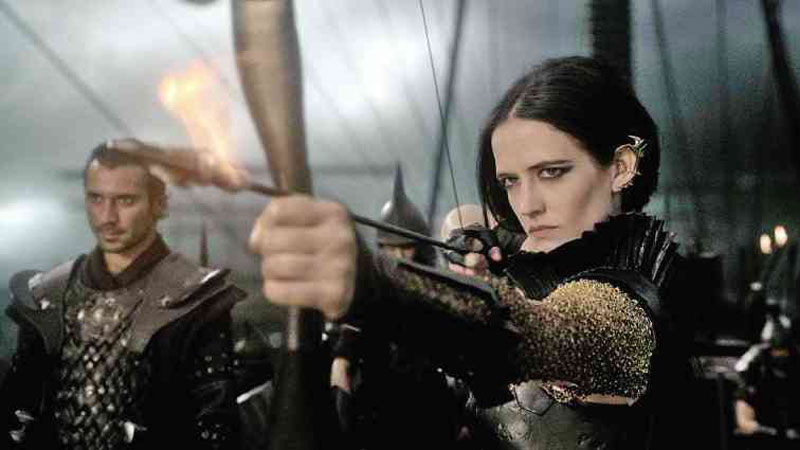When in doubt, add more blood
The current film, “300: Rise of an Empire,” benefits from the striking visual treatment that made the images in the first “300” film memorable.
This time around, the “visually operatic” presentational style is used to dramatize an even bigger confrontation, involving Greek general Themistokles’ effort to unite all of Greece against the numerically superior Persian army and navy.
To make the sequel an even more overwhelming success, director Noam Murro throws in just about everything his fertile imagination can conjure up—but, the finished film ends up too big and bloated for comfort.
Not content with battle scenes on land and sea that are already satisfyingly clangorous and violent, the production adds an extra layer of visual viciousness—and viscocity—by filling the screen with shocking images of heads being lopped off, limbs being severed—and blood spurting in extravagant geysers with such frequency that the crimson flood ends up as the movie’s central motif.
It’s as if the production’s mantra were, “when in doubt, add more blood”—and its special effects mavens generously and gleefully oblige with more of the same!
We understand that it’s a tall order to top a big action sensation, but this follow-up caper shows that the movie world’s hitmaking sweepstakes aren’t won by a simplistic process of mere addition or multiplication.
Memorable imagery
To be sure, “Rise of an Empire” boasts of its own memorable imagery, but all that kneejerk bloodletting eventually proves to be a distraction from the production’s merits.
Its genuine virtues are best exemplified by a sequence that show the defeat of the once invincible Persian navy, with the tumultuous battle rendered even more uniquely striking by being depicted from an underwater perspective.
In this long and lambent sequence, which is lyrically done in slow motion, many dead bodies surrounded by the detritus of defeat fill the screen like haunting and harrowing images from a painting by Hieronymus Bosch.
This isn’t Hell, but it’s the similarly hope-less depiction of an aqueous Limbo, filled with the sacrificial pawns and victims of the Persian god-king’s megalomaniacal ambition.
Unfortunately, most of the other battle scenes in the film are too hecticly and distractingly presented, so their impact is less affecting.
Another pervading problem is the fact that the movie’s actors, led by Sullivan Stapleton, have a hard time making sense of the ponderously “poetic” dialogue and narration they’re made to intone, sometimes sounding like they have marbles in their mouths.
On the other hand, the film can be lauded for its inclusion of female characters in strong, vivid and dominant roles, principally Eva Green as the commander of the Persian navy, and Lena Headey as Sparta’s queen.
In particular, Green’s character is given a detailed back story that explains why she grew up so bitter and vengeful. Her character, Artemisia, is even given the “honor” of fighting Themistokles himself at film’s end, and their spectacularly flashing, slashing sword fight is a sight to behold.
